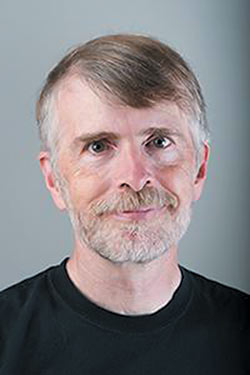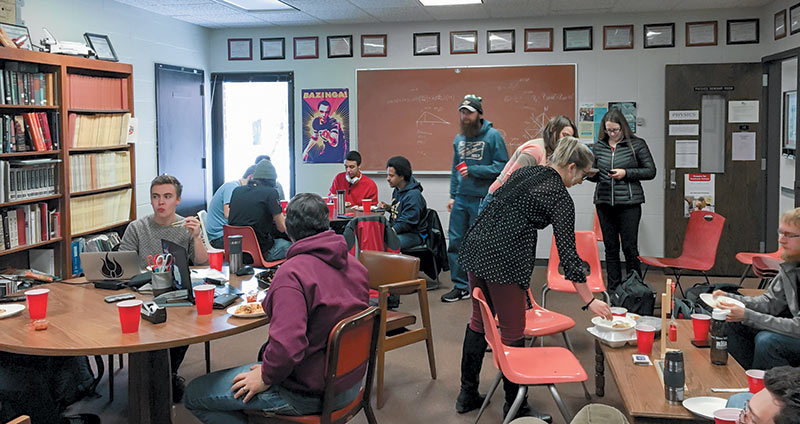Physics for All
Fall
2019
Letter
Physics for All
Earl Blodgett, SPS National Executive Committee, Historian
 Is the physics community a reasonable reflection of society at large? Do we as physicists play a role in how welcoming our community is perceived to be by different groups of people? How can we be agents of change within our community and the broader society?
Is the physics community a reasonable reflection of society at large? Do we as physicists play a role in how welcoming our community is perceived to be by different groups of people? How can we be agents of change within our community and the broader society?
The Society of Physics Students was founded in 1968, a turbulent year in the United States. One would think that an organization launched in the atmosphere of the struggle for civil rights would be attuned to the times. Indeed, the official stance of SPS has always been that of being an organization open to anyone interested in physics, no matter what their background. However, as a group dominated by white males, it was years before the scope of the problem of demographic diversity was really acknowledged and grappled with at the National Council level. Dr. Hla Shwe of East Stroudsburg State College was the first Asian president of SPS, elected in 1977. From the founding of SPS, women were welcome as members within Sigma Pi Sigma and were elected to the SPS National Council even in the early years, but it wasn’t until 1991 that a woman was elected president of SPS—Dr. Jean Krisch of the University of Michigan. She was also the first woman elected president of Sigma Pi Sigma, in 1994.

This trend of working to represent everyone that calls themselves a physicist or astronomer has continued—and we’ve tried to pick up the pace! Over the last 20 years, the SPS Council, the elected body responsible for representing chapters and members at the national level, has typically had a higher proportion of women than one would expect based on the proportion of women in physics, with the fluctuations one might expect given the sample size. Over the years, the council has issued three statements on diversity and inclusion and created programs, awards, and workshops based on the goal of supporting people from groups that are underrepresented in physics, providing good leadership in these areas.
But inclusivity in physics is something that really starts at the chapter level, with individual people choosing to make a difference. Grand statements by leaders just don’t make a difference if local chapters don’t take up the challenge themselves. Look at your own chapter. If you have a commons room where your physics students can hang out, is it really a place that is welcoming to all? If your lounge has the social ambience of an eighth-grade boy’s locker room, it really isn’t going to be a welcoming place for all. (Hopefully it doesn’t smell like a locker room!)
Blatantly disrespectful conduct is easy to recognize but requires someone to step up to call it out as being inappropriate. Students can work with faculty and administration to address those issues. But even if your department doesn’t have any dramatically bad behavior going on, you still might not have a welcoming environment for a wide spectrum of people. Implicit bias and microaggressions are harder to recognize but just as damaging to the departmental environment and the community at large. Many people leave physics and astronomy not because of one specific moment but a career of slights and comments. We are all responsible for supporting each other—physics is hard, and we make it through in large part due to the support and guidance of colleagues and friends.
Engaging in serious self-examination is not easy, nor is it very comfortable. Fortunately, every campus has resources available that your chapter can take advantage of. You can work with an office of diversity and inclusion or a women and gender studies program or other support office to learn more. SPS National and your National Council zone councilors are also available to help your local chapter learn to support all of the physics enthusiasts who come through your department.
To learn more about how the SPS National Council can support your chapter, visit spsnational.org/about/governance/national-council.
Learn about SPS programs and resources at spsnational.org/programs.
